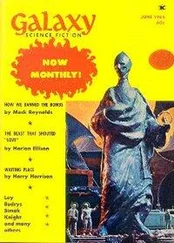Owen Coffin • Isaac Cole • Henry Dewitt Richard Peterson • Charles Ramsdell • Barzillai Ray Samuel Reed • Isaiah Sheppard • Charles Shorter Lawson Thomas • Seth Weeks • Joseph West William Wright
CABIN BOY
Thomas Nickerson
Sail Plan of the Whaleship Essex
1 mizzen sail
2 mizzen topgallant sail
3 mizzen topsail
4 main topgallant sail
5 main topsail
6 main course or mainsail
7 fore topgallant sail
8 fore topsail
9 fore course or fore sail
10 fore topmast staysail
11 jib
12 flying jib
Deck Plan of the Whaleship Essex
1 windlass
2 forecastle companionway
3 foremast
4 tryworks
5 main hatch
6 mainmast and pumps
7 cookhouse
8 spare whaleboat mounted on overhead rack
9 mizzenmast
10 aft companionway
11 wheel
12 spare whaleboat
13 starboard boat
14 aft larboard boat
15 waist boat

IT WAS, HE LATER REMEMBERED, “the most pleasing moment of my life”—the moment he stepped aboard the whaleship Essex for the first time. He was fourteen years old, with a broad nose and an open, eager face, and like every other Nantucket boy, he’d been taught to “idolize the form of a ship.” The Essex might not look like much, stripped of her rigging and chained to the wharf, but for Thomas Nickerson she was a vessel of opportunity. Finally, after what had seemed an endless wait, Nickerson was going to sea.
The hot July sun beat down on her old, oil-soaked timbers until the temperature below was infernal, but Nickerson explored every cranny, from the brick altar of the tryworks being assembled on deck to the lightless depths of the empty hold. In between was a creaking, compartmentalized world, a living thing of oak and pine that reeked of oil, blood, tobacco juice, food, salt, mildew, tar, and smoke. “[B]lack and ugly as she was,” Nickerson wrote, “I would not have exchanged her for a palace.”
In July of 1819 the Essex was one of a fleet of more than seventy Nantucket whaleships in the Pacific and Atlantic Oceans. With whale-oil prices steadily climbing and the rest of the world’s economy sunk in depression, the village of Nantucket was on its way to becoming one of the richest towns in America.
The community of about seven thousand people lived on a gently sloping hill crowded with houses and topped by windmills and church towers. It resembled, some said, the elegant and established port of Salem—a remarkable compliment for an island more than twenty miles out into the Atlantic, below Cape Cod. But if the town, high on its hill, radiated an almost ethereal quality of calm, the waterfront below bustled with activity. Sprouting from among the long, low warehouses and ropewalks, four solid-fill wharves reached out more than a hundred yards into the harbor. Tethered to the wharves or anchored in the harbor were, typically, fifteen to twenty whaleships, along with dozens of smaller vessels, mainly sloops and schooners, that brought trade goods to and from the island. Each wharf, a labyrinth of anchors, try-pots, spars, and oil casks, was thronged with sailors, stevedores, and artisans. Two-wheeled, horse-drawn carts known as calashes continually came and went.
It was a scene already familiar to Thomas Nickerson. The children of Nantucket had long used the waterfront as their playground. They rowed decrepit whaleboats up and down the harbor and clambered up into the rigging of the ships. To off-islanders it was clear that these children were a “distinctive class of juveniles, accustomed to consider themselves as predestined mariners…They climbed ratlines like monkeys—little fellows of ten or twelve years—and laid out on the yardarms with the most perfect nonchalance.” The Essex might be Nickerson’s first ship, but he had been preparing for the voyage almost his entire life.
He wasn’t going alone. His friends Barzillai Ray, Owen Coffin, and Charles Ramsdell, all between the ages of fifteen and eighteen, were also sailing on the Essex. Owen Coffin was the cousin of the Essex ’s new captain and probably steered his three friends to his kinsman’s ship. Nickerson was the youngest of the group.
The Essex was old and, at 87 feet long and 238 tons displacement, quite small, but she had a reputation on Nantucket as a lucky ship. Over the last decade and a half, she had done well by her Quaker owners, regularly returning at two-year intervals with enough oil to make them wealthy men. Daniel Russell, her previous captain, had been successful enough over the course of four voyages to be given command of a new and larger ship, the Aurora. Russell’s promotion allowed the former first mate, George Pollard, Jr., to take over command of the Essex , and one of the boatsteerers (or harpooners), Owen Chase, to move up to first mate. Three other crew members were elevated to the rank of boatsteerer. Not only a lucky but apparently a happy vessel, the Essex was, according to Nickerson, “on the whole rather a desirable ship than otherwise.”
Since Nantucket was, like any seafaring town of the period, a community obsessed with omens and signs, such a reputation counted for much. Still, there was talk among the men on the wharves when earlier that July, as the Essex was being repaired and outfitted, a comet appeared in the night sky.
NANTUCKET was a town of roof dwellers. Nearly every house, its shingles painted red or left to weather into gray, had a roof-mounted platform known as a walk. While its intended use was to facilitate putting out chimney fires with buckets of sand, the walk was also an excellent place to look out to sea with a spyglass, to search for the sails of returning ships. At night, the spyglasses of Nantucket were often directed toward the heavens, and in July of 1819, islanders were looking toward the northwest sky. The Quaker merchant Obed Macy, who kept meticulous records of what he determined were the “most extraordinary events” in the life of his island, watched the night sky from his house on Pleasant Street. “The comet (which appears every clear night) is thought to be very large from its uncommonly long tail,” he wrote, “which extends upward in opposition to the sun in an almost perpendicular direction and heaves off to the eastward and nearly points for the North Star.”
From earliest times, the appearance of a comet was interpreted as a sign that something unusual was about to happen. The New Bedford Mercury , the newspaper Nantucketers read for lack of one of their own, commented, “True it is, that the appearance of these eccentric visitors have always preceded some remarkable event.” But Macy resisted such speculation: “[T]he philosophical reasoning we leave to the scientific part of the community, still it is beyond a doubt that the most learned is possessed of very little undoubted knowledge of the subject of cometicks.”
At the wharves and shipping offices there was much speculation, and not just about the comet. All spring and summer there had been sightings up and down the New England coast of what the Mercury described as “an extraordinary sea animal”—a serpent with black, horselike eyes and a fifty-foot body resembling a string of barrels floating on the water. Any sailor, especially if he was young and impressionable like Thomas Nickerson, must have wondered, if only fleetingly, if this was, in fact, the best time to be heading out on a voyage around Cape Horn.
Читать дальше













